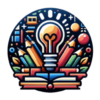In the digital age, educational resources have transcended traditional books and classrooms, making learning more accessible, engaging, and diverse. High school students, in particular, benefit from a plethora of apps designed to enhance their academic performance and overall learning experience. This article explores the top 5 educational apps catering to high school students, focusing on their features, usability, and how they complement traditional learning methods.
The Evolution of Educational Technology
The realm of educational technology has undergone a remarkable transformation over the decades, evolving from simple aids like chalkboards and textbooks to sophisticated digital platforms and interactive apps. This journey mirrors the broader technological advancements in society and reflects an ever-growing integration of digital tools in education.
Initially, educational technology was rudimentary, focusing mainly on improving the efficiency of teaching methods. The introduction of overhead projectors in the 1930s and educational television programs in the 1950s marked early steps towards using technology for educational purposes. These tools were primarily one-dimensional, serving as a means to display information rather than interactive learning platforms.
The real game-changer arrived with the advent of personal computers and the Internet. By the late 20th century, computers began to revolutionize the classroom, introducing a world of possibilities that extended far beyond traditional teaching methods. Educational software started to emerge, offering interactive and engaging ways for students to learn and explore new concepts.
The 21st century has seen explosive growth in educational technology, with the internet making resources more accessible and mobile technology allowing learning to happen anytime, anywhere. Today’s educational apps provide interactive learning experiences and adapt to individual learning styles, making education more personalized than ever before.
This evolution is not just about the technology itself but about changing the very approach to education. It shifts the focus from rote learning to fostering critical thinking and problem-solving skills, preparing students for a rapidly changing world. As we continue to advance technologically, the future of educational technology promises even more dynamic and immersive learning experiences, breaking the traditional boundaries of the classroom.
1. Khan Academy: Mastering the Basics and Beyond
Overview
Khan Academy has revolutionized the way students learn by offering a vast repository of educational materials covering subjects like math, science, history, and more. Its personalized learning approach allows students to learn at their own pace.
Features
- Comprehensive video lessons
- Interactive exercises
- Progress tracking
- Personalized learning dashboard
Impact on Learning
Khan Academy helps students solidify their understanding of basic concepts, thereby laying a strong foundation for advanced topics. It’s particularly useful for visual learners who benefit from video-based learning.
2. Quizlet: Making Learning Fun and Interactive
Overview
Quizlet transforms study time into an engaging and interactive experience. It’s a versatile tool that uses flashcards and games to make learning more dynamic.
Features
- Customizable flashcards
- Various study modes (e.g., Learn, Flashcards, Write, Spell)
- Game-based learning with Quizlet Live
- Study sets in various subjects
Impact on Learning
Quizlet aids in memorization and understanding of complex terms and concepts. Its game-based approach also encourages collaborative learning among peers.
3. Duolingo: Breaking Language Barriers
Overview
Duolingo is a language-learning app that’s perfect for high school students looking to learn a new language or enhance their language skills, offering courses in Spanish, French, German, and many more.
Features
- Interactive language lessons
- Personalized learning paths
- Speaking, listening, and writing exercises
- Streaks and rewards to encourage regular practice
Impact on Learning
Duolingo makes language learning accessible and fun, helping students develop practical language skills that are valuable both in academic and real-world settings.
4. Wolfram Alpha: A New Dimension to Problem-Solving
Overview
Wolfram Alpha is more than just a computational engine; it’s a tool that enhances problem-solving skills in mathematics, science, and other technical subjects.
Features
- Step-by-step solutions to complex problems
- Data analysis and visualization tools
- Vast database of information across various subjects
- Interactive widgets for various calculations
Impact on Learning
This app is particularly beneficial for students needing extra help solving complex mathematical and scientific problems. It also serves as a great tool for research and data analysis.
5. Evernote: Organized Learning for the Digital Age
Overview
Evernote is an organizational tool that allows students to take notes, organize study materials, and collaborate on projects, making it an essential app for the modern student.
Features
- Note-taking in various formats (text, audio, web clippings)
- Organization with notebooks and tags
- Collaboration tools for group work
- Integration with other apps and devices
Impact on Learning
Evernote helps students stay organized, which is crucial for managing the diverse range of subjects and assignments in high school. It’s particularly useful for project-based learning and group assignments.
Navigating the World of Educational Apps
In the digital era, the abundance of educational apps has become both a blessing and a challenge. With thousands of options available, choosing the right app to enhance learning can be overwhelming for students, parents, and educators. Navigating this world requires a blend of discernment and understanding of educational needs.
The first step in this journey is identifying the educational goal. Apps vary widely in their focus—some are designed for in-depth subject learning, while others aim to improve skills like critical thinking, organization, or language proficiency. Clearly defining the learning objective simplifies the selection process.
Once the goal is set, evaluating the app’s content quality and educational value is crucial. High-quality educational apps should have accurate, engaging content and be aligned with current educational standards. Reviews from educators, experts, and other users can provide valuable insights into the app’s effectiveness.
Usability and accessibility are also key factors. An app that is intuitive and easy to navigate enhances the learning experience, particularly for younger students. Accessibility features, such as text-to-speech or adjustable text sizes, are essential for inclusive education, ensuring all students can benefit from the app.
Privacy and security cannot be overlooked. Responsible apps should have clear privacy policies, ensuring the safety of users’ data. This is especially important for apps used by minors.
Finally, integrating the app into the regular learning process is vital. Whether it complements classroom learning or is used for independent study, the app should seamlessly fit into the educational routine, enhancing and not hindering the overall learning experience.
Navigating the world of educational apps successfully thus involves a balance of clear goals, careful evaluation, and thoughtful integration, ensuring that the chosen apps truly contribute to the educational journey.
Balancing Technology and Traditional Learning
In the 21st century, the fusion of technology with traditional learning methods has become a cornerstone of education. However, this amalgamation brings forth the challenge of striking a balance between digital tools and conventional educational techniques. Achieving this equilibrium is crucial for fostering a holistic learning environment that leverages the strengths of both realms.
Traditional learning methods, characterized by face-to-face interactions, textbooks, and handwritten notes, have long been the foundation of education. These methods promote direct communication, in-depth discussion, and the development of interpersonal skills. On the other hand, technology offers unparalleled access to information, interactive learning experiences, and the ability to tailor education to individual learning styles.
The key to balancing these approaches lies in integration rather than replacement. Technology should be viewed as a complement to traditional teaching methods, not a substitute. For instance, while digital tools can offer innovative ways to present information and engage students, the role of teachers in guiding, mentoring, and providing context remains irreplaceable.
Additionally, it’s essential to cultivate digital literacy alongside traditional learning skills. Students should be equipped with the ability to discern credible sources online, use digital tools responsibly, and understand the ethical implications of technology.
Balancing screen time is also a critical aspect. Excessive use of digital devices can lead to issues like reduced attention spans and physical strain. Educators and parents must collaborate to ensure that technology use is moderated and that students also engage in non-screen-based activities, fostering a well-rounded educational experience.
Ultimately, balancing technology with traditional learning requires a thoughtful approach that appreciates the value of both, ensuring that students are academically prepared for the digital world they inhabit.
Conclusion
In summary, the integration of technology into high school education represents a significant leap forward in how we approach teaching and learning. The top 5 educational apps highlighted in this article exemplify the innovative tools at the disposal of today’s students, offering diverse, interactive, and personalized learning experiences. However, as we delve deeper into the digital age, navigating this vast landscape with discernment and purpose becomes increasingly important.
The evolution of educational technology, from its rudimentary beginnings to today’s sophisticated platforms, underscores a transformative shift in educational paradigms. We create a dynamic and adaptable educational environment as we balance the new with the old, embracing technology while valuing traditional learning methods. This balance is key to preparing students for academic success and lifelong learning in an ever-changing world.
Moreover, the journey through the world of educational apps teaches us the importance of critical selection, ensuring that these tools are used to their fullest potential in enhancing learning. As we equip students with these digital resources, we must also instill in them the skills to use technology responsibly and effectively.

